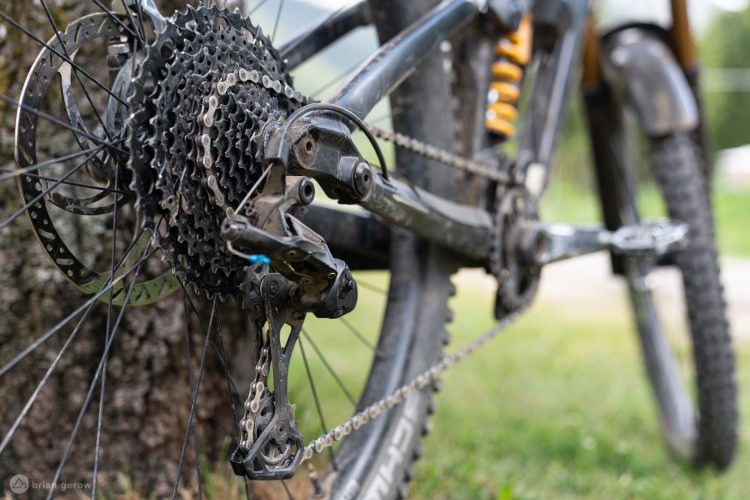
For most riders, a new mountain bike is a serious financial investment. You want to make sure it lasts for a long time, but there’s an enemy out there that has its sights set on your new ride. Rust or corrosion can shorten the lifespan of many mountain bikes.
While rust is confined to iron or its alloys (like steel), corrosion affects all metals, even aluminum. If left unchecked, these enemies cause metals to degrade over time, and ultimately fail.
No one wants a frame to crack, or a chain to break during a ride. So how can you prevent rust or corrosion from destroying your bike? Here are 5 simple things that will help keep your bike free from rust or corrosion for life.
Install fenders and frame protection on your new ride

Mountain bikes take a lot of abuse. Tires hurl dirt and rocks against the frame and splatter mud and grime onto the suspension and drivetrain. While you can’t completely protect your bike from the elements during a ride, using fenders and frame protection will greatly reduce the harm done.
Debris can penetrate suspension internals as stanchions compress while soaking up bumps in the trail, and fenders serve to deflect dirt and mud away from sensitive parts. Frame protection prevents rocks or other debris — which can create chips in the paint that expose the bare metal to the elements, leading to rust or corrosion — from hitting your frame.
It doesn’t cost a lot of money to buy a decent pair of fenders and frame protectors, but the payoff can be huge in terms of reducing your maintenance costs and extending the life of your bike.
Don’t leave your bike exposed to the elements

Moisture is the catalyst for rust or corrosion, so leaving your bike outdoors, where dew, rain, or snow can collect on it is never a good idea. Even if you cover it, moisture can find its way under the cover and will stay there longer because it can’t evaporate.
Ideally, a shaded, climate-controlled environment is the best storage solution, but not everyone has the ability to store our bikes that way. I haven’t been able to convince my wife my bike can double as wall art in our living room. A garage or storage shed is the next best option. Just remember that moisture will still be present, so look over your bike regularly to check for any signs of rust or corrosion.
Wash and dry your bike regularly

Dirt and sweat can cause rust or corrosion if they are allowed to stay on your bike for an extended period of time. Sweat can eat through the clear coat on your frame, and dirt can damage your drivetrain and suspension. At a minimum, you should thoroughly clean your bike at least once a month, and more often if you ride in wet conditions.
Washing your bike will not only protect it from rust and corrosion, but it will also give you an opportunity to inspect for any signs of trouble. After you wash your bike, dry it as thoroughly as possible. A chamois is great for soaking up water. You can also use compressed air in the hard-to-reach places. Just don’t blast the bushings and/or bearings directly, or you can blow any remaining dirt and grime directly into them, causing damage.
Remember, a clean bike is a healthy bike.
Keep your bike well-lubricated

Rust or corrosion can’t develop on a lubricated surface. Lubricants not only keep your bike operating smoothly, but they also protect it from the elements. It’s essential to keep all your bike’s bushings and bearings greased, and your chain lubricated if you want them to last. Check these parts on a regular basis for any signs of rust or corrosion, which indicates a lack of lubricant. Always lubricate your chain after you’ve washed your bike. Keep your stanchions and shock seals lubricated so they won’t dry out and crack.
Give your bike a proper tune-up
Tune-ups are a great way to prevent rust or corrosion from wreaking havoc on your bike. Disassembling your bike, inspecting and cleaning all the parts, and re-lubricating bushings, bearings, and drivetrain parts every six months allows you to check your bike for any signs of rust or corrosion, and prevent them from doing irreversible damage.
When doing a tune-up, make sure you (or a trusted mechanic) check the inside of the frame for any signs of rust or corrosion, and the rims. Both alloy and brass nipples can corrode over time if moisture gets behind the rim tape and accumulates on them. Nipple corrosion can be further accelerated by the chemicals in some tire sealants if they come in contact with the nipples.
While tune-ups are labor-intensive and can cost upwards of $100 or more if a local bike shop performs the work, they are a sure-fire way to prevent a lot of needless damage to your bike.
Mountain bikes can last for years if you keep rust and corrosion away

Most riders can’t replace their bikes on a frequent basis. We need to keep them for years at a time. In order to do so, we should be vigilant so that rust or corrosion won’t destroy our rides. The simple tips I offered above will keep your bike in great shape for years to come.
Do you have a tip for keeping mountain bikes free from rust or corrosion? Please share it in the comments section below.





















1 Comments
Jan 4, 2022